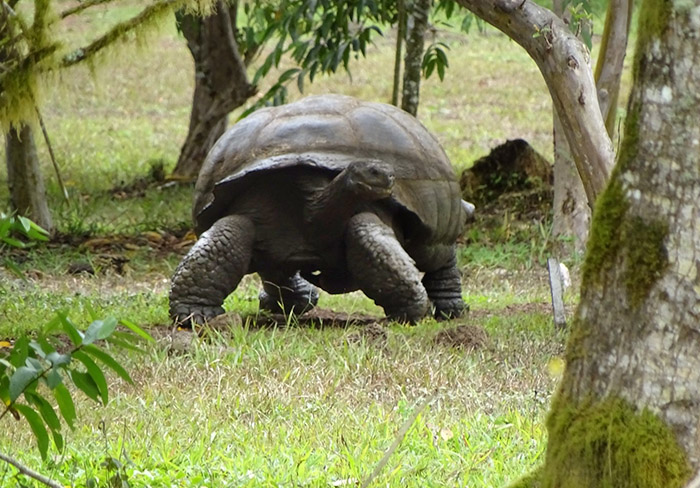
Chemistry was out of the charts": FaceTime has brought to life the first date for endangered Galapagos tortoises via a phone screen | Travel Blog
When a couple of tortoises from Australia called FaceTime to share their first virtual date, it was love at first sight.
Hugo, the Galapagos tortoise has been at the Australian Reptile Park for over 70 years. Now, at the age he is "ready" to settle down.
Estrella, his mate, was scheduled to arrive from Germany in the early 2020s, but she was delayed by Covid-19 restrictions.
Estrella is now in Australia, but she will remain in quarantine until September. So the couple had a virtual date when "the chemistry was off-the-charts".
Daniel Rumsey is the head of reptiles in the park. He stated: "We have always wanted Hugo to find a girlfriend to replace his'special' rocks in his enclosure. This was a great step towards that goal."
Storyful via AP
Is the giant tortoise, an elephant or a hippo in the unique ecosystem of the Galapagos Islands?

A team of international scientists is trying decide whether Galapagos giant Tortoises are the elephants and hippopotamuses in their environment.
The giant tortoises are considered ecosystem engineers because they have a significant impact on the environment of the Ecuadorian islands.
They spread terrestrial nutrients in aquatic zones through their penchant to relax in water pools, much like a hippo in its native African habitat.
A grazing hippos can consume 40 kg of grass per night. When the animal goes to the water to cool down during the day, it defecates partially digested vegetation into the water which acts as a fertilizer. Diego Ellis Soto, a researcher at the giant tortoise movement ecology (PEMTG), told Efe.
He said, "We think that the Galapagos tortoises do something very similar." He also pointed out how the huge influx of natural fertilizers from mud on the animals' shells benefits both plant and insect life in the pool they frequent and can even alter the oxygen level in the water.
"The tortoises can be described as a mix of elephants and hippopotamuses. They are essential for aquatic ecosystems such as the pools, but also play a vital role in the terrestrial ecosystem in Galapagos. Because they eat over 60 species of plants and spread seeds, they help to germination. This is similar to elephants in Africa.
The research of these animals, which can be up to 300kg, started on Santa Cruz Island, where scientists discovered a pool of water containing up to 60 tortoises.
It was equivalent to one tortoise for every square meter.
"We believed that the biomass of tortoises might be higher than the water in the pool in extreme cases," he said, noting that natural ponds can range in size from just one kilometer to nine square meters.
Check Our Suggested Tours:
Check Our Galapagos Cruises:

